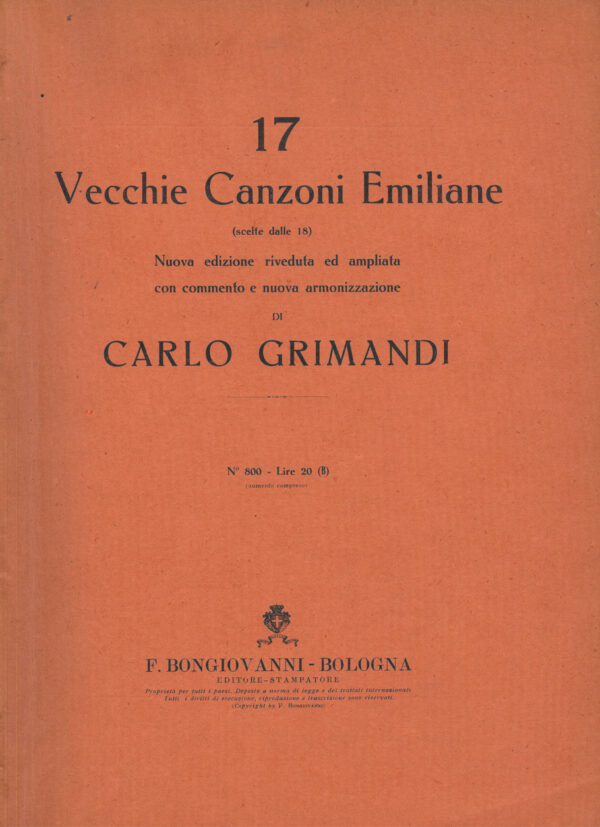Carlo Grimandi
Carlo Grimandi was born in Anzola dell’Emilia in 1875, the youngest of four children of Enrico and Giulia Sarti, both of humble origins. He lost his sight from a very early age, and shortly afterward, both parents passed away, leaving the four children in dire poverty. Carlo withdrew into a hostile and almost “autistic” isolation. It was decided to place the unfortunate boy under the care of a guardian, and perhaps at his initiative, in April 1881, an application was submitted for his admission to the newly established “School for Poor Blind Children” in Bologna.
This marked his first contact with that institution, which would eventually become the “Institute for the Blind of Bologna,” later named after Francesco Cavazza, to whom Grimandi would be inextricably linked due to his undeniable natural predisposition toward music. The young musician became a constant presence in the salons of Bologna’s most prominent families: naturally, the Cavazzas, the Salinas, the Mazzacorati marquises, and the Isolani.
In 1892, at Salina’s insistence, Grimandi traveled to Bayreuth to attend performances of Tannhäuser and Parsifal by Richard Wagner, conducted by Vanzo and Mottle, respectively, alongside Salina, Marquis Mazzacorati, Marquis Gregorini, and Countess Talon. This was the first of two “long” journeys undertaken throughout his life by a man who, although rather reclusive, appeared eager to transcend the limitations imposed by both his condition as a “disabled” person and the restricted scope of Italian musical culture at the time.
Many of his piano pieces and multi-voiced music, possibly composed for use in choir lessons, likely date from these years or just prior. Notably, there is also his chamber music output, among which the imposing Sonata in D Minor for Violin and Piano stands out. This piece premiered at the Cavazza residence in the presence of Arturo Toscanini. Grimandi was also involved in addressing issues related to the condition of the blind at the International Congress for the Improvement of the Blind.
He had very few friendships, including his “benefactors” (the Counts Cavazza and Salina, Augusto Romagnoli), a few students (such as the aforementioned Serrazanetti), and the young concertist Antonietta Chialchia, to whom he dedicated several compositions for violin and piano. It is worth noting that out of the composer’s entire output, only a small portion (no more than ten or twelve pieces in total) was published. The rest was printed in Braille, and it is truly a blessing that throughout Grimandi’s artistic life, unknown hands took care to transfer nearly all of his works into print. Among this archive are the 17 old Emilian songs in the edition by F. Bongiovanni.
This text is freely adapted from Carlo Grimandi: Musicista Anzolese by Marco Belluzzi.





